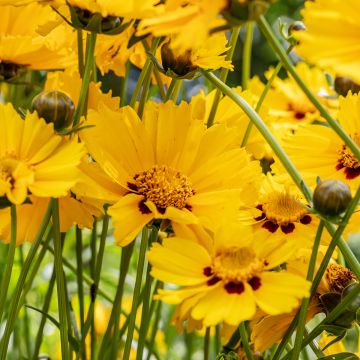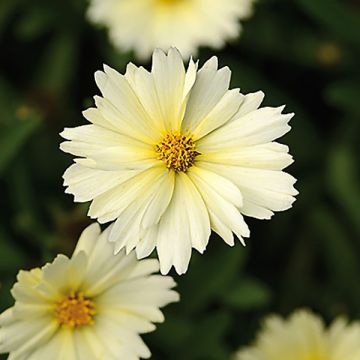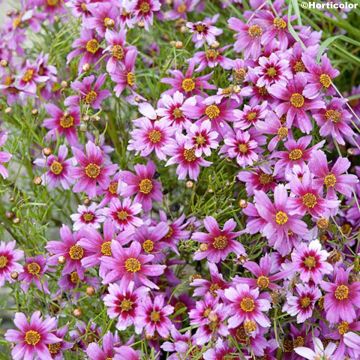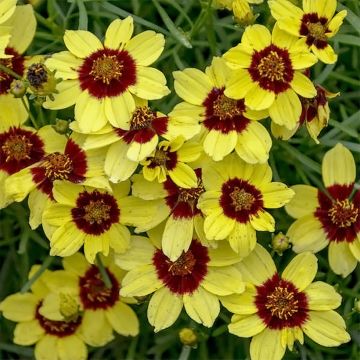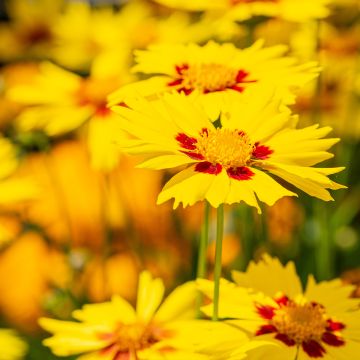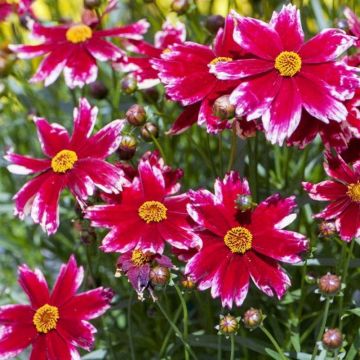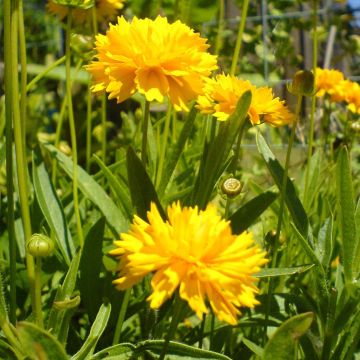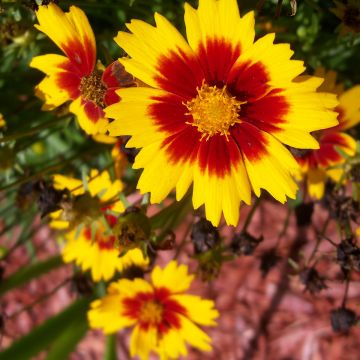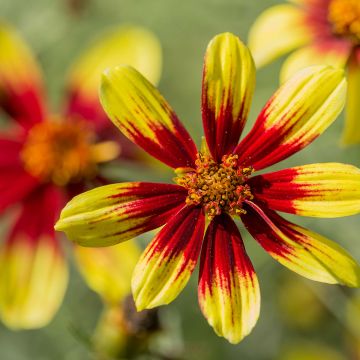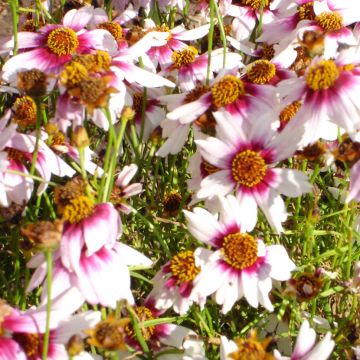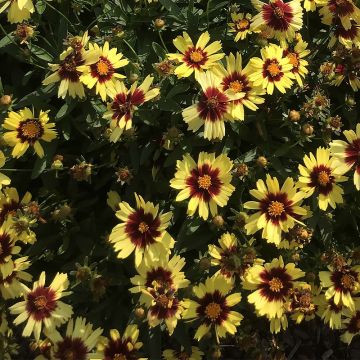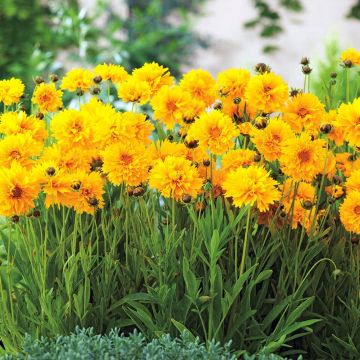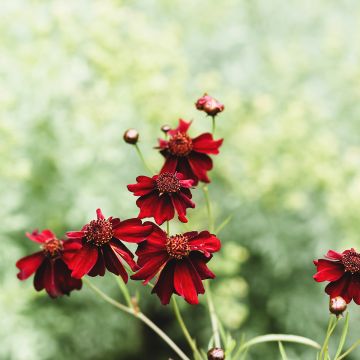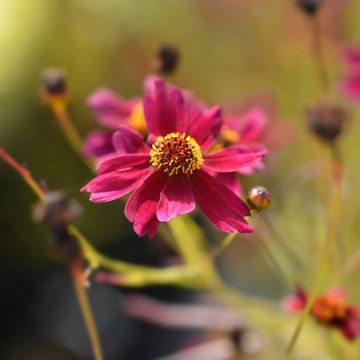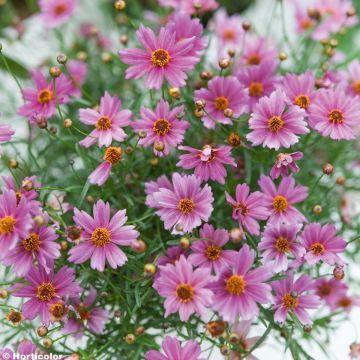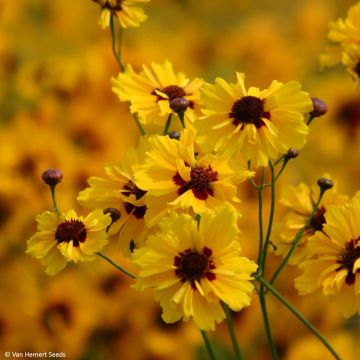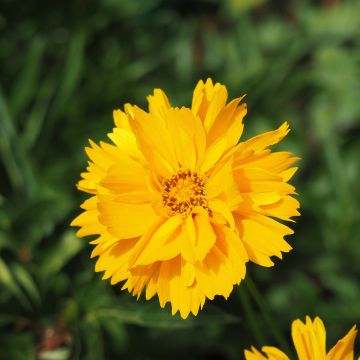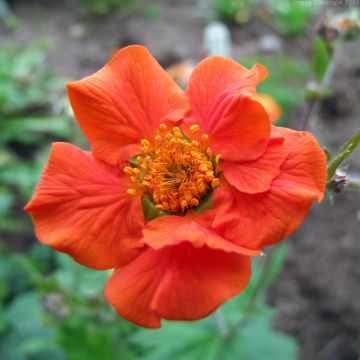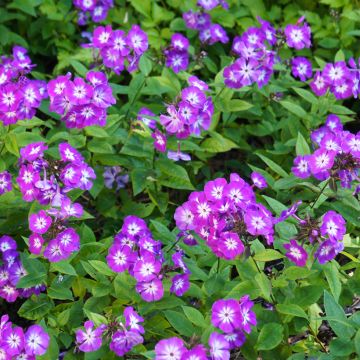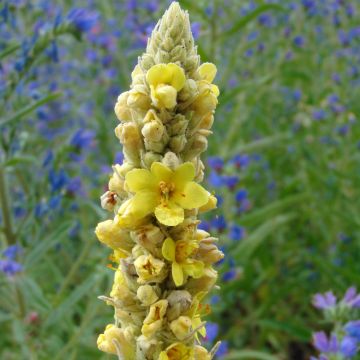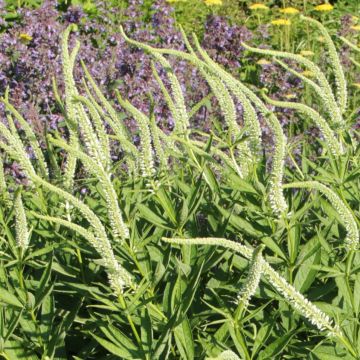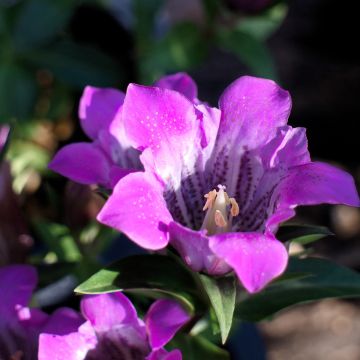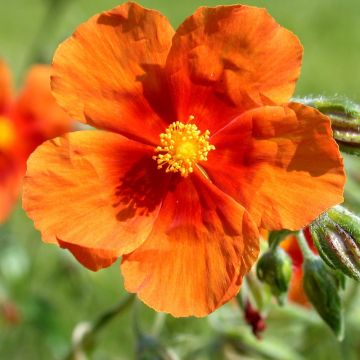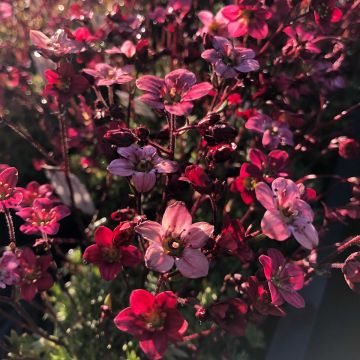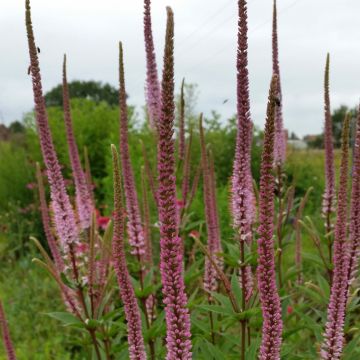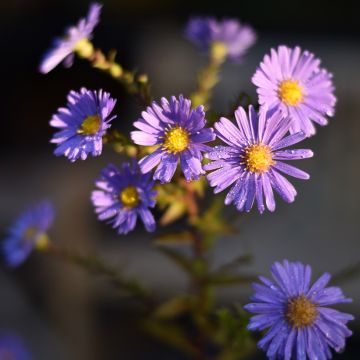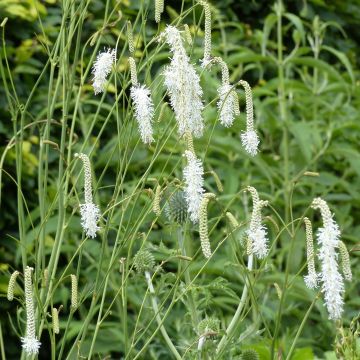

Coreopsis Desert Coral
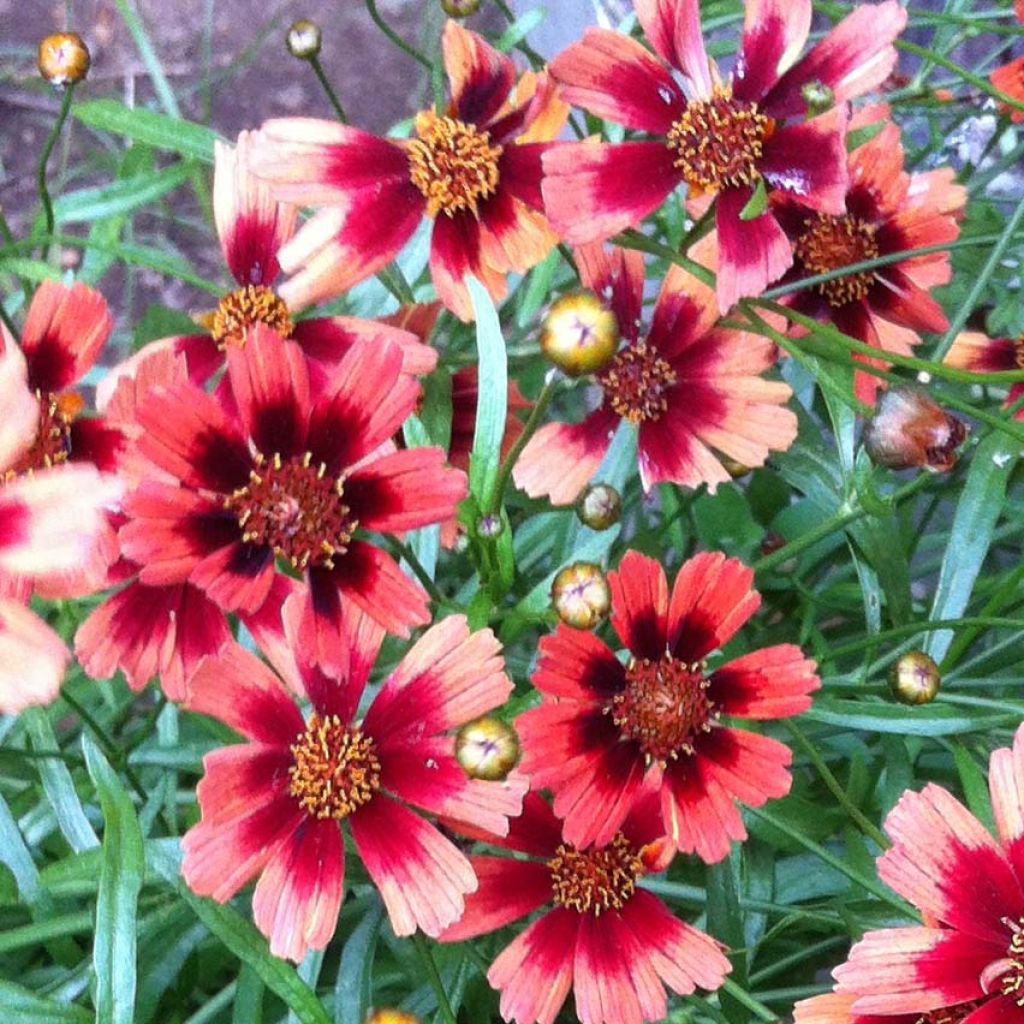

Coreopsis Desert Coral
Coreopsis Desert Coral
Coreopsis Desert Coral (Hardy Jewel Series)
Tickseed
Unfortunately, the coreopsis did not thrive; they have completely vanished. Yet, they had blossomed a little.
Nelly B., 02/04/2019
Why not try an alternative variety in stock?
View all →This plant carries a 12 months recovery warranty
More information
We guarantee the quality of our plants for a full growing cycle, and will replace at our expense any plant that fails to recover under normal climatic and planting conditions.
From €5.90 for pickup delivery and €6.90 for home delivery
Express home delivery from €8.90.
Does this plant fit my garden?
Set up your Plantfit profile →
Description
The Coreopsis 'Desert Coral' is a new variety of hardy coreopsis still relatively rare. It stands out for its compact habit and long flowering period in shades of peach, salmon, and red. From summer to the first frosts, a multitude of flowers gradually take on purplish hues, starting from the heart, which is also red, on a dark green and well-groomed plant. In autumn, they will be almost entirely red and beautifully speckled with orange, while softer shades prevail in summer. Plant it in well-exposed borders, not too-dry rockeries, natural garden areas... or in a pot on the terrace.
Coreopsis belongs to the Asteraceae family. 'Desert Coral' is part of a recently developed series of hybrids in the United States called 'Hardy Jewell'. It combines varieties selected for their cold resistance, long flowering period, and vigour. All these qualities are present in 'Desert Coral'. This rhizomatous perennial quickly forms a small bushy clump measuring 30 cm (12in) in all directions. The flowering period runs from late June to October, almost without interruption. The 4 cm (2in) diameter flower heads open in a peach tone and gradually darken to a salmon pink to orange, while a red area appears in the centre, which may extend more or less towards the periphery of the flowers. A disc of red fertile florets occupies the centre of the flower head. As the temperature drops, at the end of the season, the flowers take on a dark red hue. They are borne on short, upright stems. This plant has opposite, lanceolate, finely divided leaves measuring 4 to 7 cm (2 to 3in) in length and dark green.
Coreopsis 'Desert Coral' is a hardy and robust perennial with multiple uses. Plant it in a rockery, on a countryside-like slope with wallflowers, Damask violets, echinaceas, small grasses (Stipa, Carex, Eragrostis), and wild flax, in an herbaceous border alongside Teucrium chamaedrys or x lucidrys, cosmos, and annual cornflowers. In a pot or container, this plant blooms continuously from the first year. For a beautiful summer display, it can be paired with Echinacea purpurea Catharina, Calamintha glandulosa, and Nepeta 'Dawn to dusk' in the ground or a large pot with a bit of water. It makes a beautiful flower for summer bouquets.
Report an error about the product description
Coreopsis Desert Coral in pictures
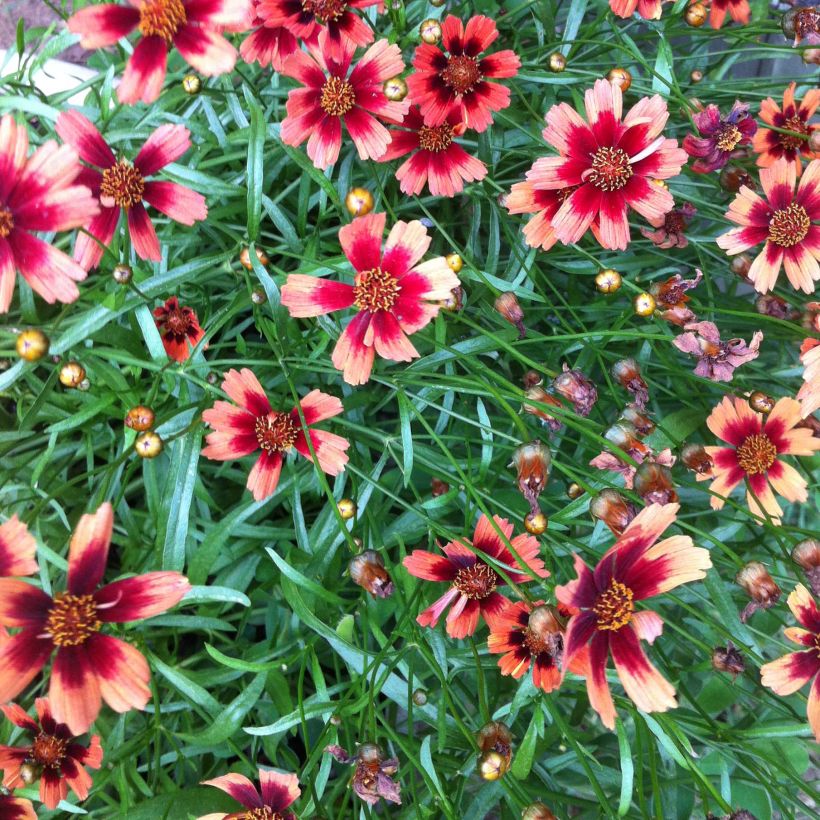

Flowering
Foliage
Plant habit
Botanical data
Coreopsis
Desert Coral (Hardy Jewel Series)
Asteraceae
Tickseed
Cultivar or hybrid
Other Coreopsis - Tickseed
Planting and care
Coreopsis plants don't like winter moisture and heavy soils. But 'Desert Coral' is easy to care for and can grow well in good, well-drained garden soil. They need full sun and some moisture in the soil to bloom properly. They prefer a light and porous soil that can be slightly acidic, neutral, or alkaline, even if it's not very rich. They can also grow well in soil with humus as long as the drainage is perfect. When grown in ideal conditions, they can live for a long time and bloom beautifully. To help them grow again in the fall, it's best to remove the faded flowers, especially towards the end of August. Pruning in late September will encourage new basal shoots to grow.
Planting period
Intended location
Care
-
, onOrder confirmed
Reply from on Promesse de fleurs
Summer flowering perennials
Haven't found what you were looking for?
Hardiness is the lowest winter temperature a plant can endure without suffering serious damage or even dying. However, hardiness is affected by location (a sheltered area, such as a patio), protection (winter cover) and soil type (hardiness is improved by well-drained soil).

Photo Sharing Terms & Conditions
In order to encourage gardeners to interact and share their experiences, Promesse de fleurs offers various media enabling content to be uploaded onto its Site - in particular via the ‘Photo sharing’ module.
The User agrees to refrain from:
- Posting any content that is illegal, prejudicial, insulting, racist, inciteful to hatred, revisionist, contrary to public decency, that infringes on privacy or on the privacy rights of third parties, in particular the publicity rights of persons and goods, intellectual property rights, or the right to privacy.
- Submitting content on behalf of a third party;
- Impersonate the identity of a third party and/or publish any personal information about a third party;
In general, the User undertakes to refrain from any unethical behaviour.
All Content (in particular text, comments, files, images, photos, videos, creative works, etc.), which may be subject to property or intellectual property rights, image or other private rights, shall remain the property of the User, subject to the limited rights granted by the terms of the licence granted by Promesse de fleurs as stated below. Users are at liberty to publish or not to publish such Content on the Site, notably via the ‘Photo Sharing’ facility, and accept that this Content shall be made public and freely accessible, notably on the Internet.
Users further acknowledge, undertake to have ,and guarantee that they hold all necessary rights and permissions to publish such material on the Site, in particular with regard to the legislation in force pertaining to any privacy, property, intellectual property, image, or contractual rights, or rights of any other nature. By publishing such Content on the Site, Users acknowledge accepting full liability as publishers of the Content within the meaning of the law, and grant Promesse de fleurs, free of charge, an inclusive, worldwide licence for the said Content for the entire duration of its publication, including all reproduction, representation, up/downloading, displaying, performing, transmission, and storage rights.
Users also grant permission for their name to be linked to the Content and accept that this link may not always be made available.
By engaging in posting material, Users consent to their Content becoming automatically accessible on the Internet, in particular on other sites and/or blogs and/or web pages of the Promesse de fleurs site, including in particular social pages and the Promesse de fleurs catalogue.
Users may secure the removal of entrusted content free of charge by issuing a simple request via our contact form.
The flowering period indicated on our website applies to countries and regions located in USDA zone 8 (France, the United Kingdom, Ireland, the Netherlands, etc.)
It will vary according to where you live:
- In zones 9 to 10 (Italy, Spain, Greece, etc.), flowering will occur about 2 to 4 weeks earlier.
- In zones 6 to 7 (Germany, Poland, Slovenia, and lower mountainous regions), flowering will be delayed by 2 to 3 weeks.
- In zone 5 (Central Europe, Scandinavia), blooming will be delayed by 3 to 5 weeks.
In temperate climates, pruning of spring-flowering shrubs (forsythia, spireas, etc.) should be done just after flowering.
Pruning of summer-flowering shrubs (Indian Lilac, Perovskia, etc.) can be done in winter or spring.
In cold regions as well as with frost-sensitive plants, avoid pruning too early when severe frosts may still occur.
The planting period indicated on our website applies to countries and regions located in USDA zone 8 (France, United Kingdom, Ireland, Netherlands).
It will vary according to where you live:
- In Mediterranean zones (Marseille, Madrid, Milan, etc.), autumn and winter are the best planting periods.
- In continental zones (Strasbourg, Munich, Vienna, etc.), delay planting by 2 to 3 weeks in spring and bring it forward by 2 to 4 weeks in autumn.
- In mountainous regions (the Alps, Pyrenees, Carpathians, etc.), it is best to plant in late spring (May-June) or late summer (August-September).
The harvesting period indicated on our website applies to countries and regions in USDA zone 8 (France, England, Ireland, the Netherlands).
In colder areas (Scandinavia, Poland, Austria...) fruit and vegetable harvests are likely to be delayed by 3-4 weeks.
In warmer areas (Italy, Spain, Greece, etc.), harvesting will probably take place earlier, depending on weather conditions.
The sowing periods indicated on our website apply to countries and regions within USDA Zone 8 (France, UK, Ireland, Netherlands).
In colder areas (Scandinavia, Poland, Austria...), delay any outdoor sowing by 3-4 weeks, or sow under glass.
In warmer climes (Italy, Spain, Greece, etc.), bring outdoor sowing forward by a few weeks.


































